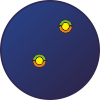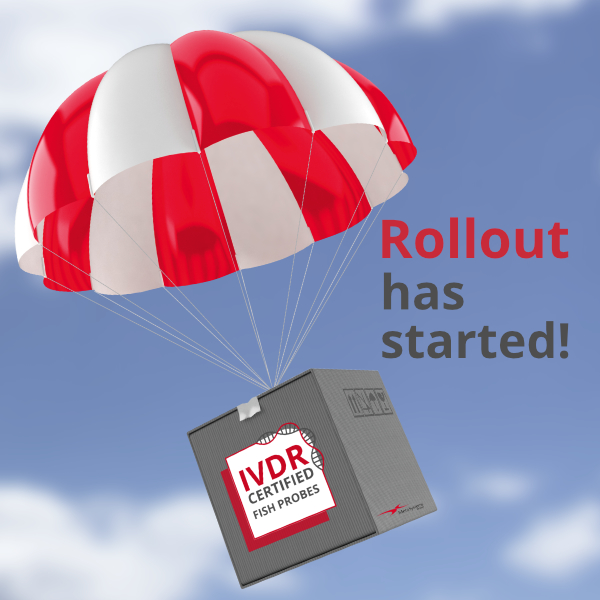
XL PAX5 BA
Break Apart Probe
- Order Number
- D-5143-100-OG
- Package Size
- 100 µl (10 Tests)
- Chromosome
- 099
- Regulatory Status
- IVDD
IVDR Certification
MetaSystems Probes has already certified a wide range of FISH probes, according to IVDR.
This product remains IVDD-certified until further notice.
Discover all IVDR-certified products
XL PAX5 BA consists of an orange-labeled probe hybridizing to the PAX5 gene and distal gene regions at 9p13 and a green-labeled probe hybridizing proximal to the PAX5 gene region at 9p13.
Probe maps for selected products have been updated. These updates ensure a consistent presentation of all gaps larger than 10 kb including adjustments to markers, genes, and related elements. This update does not affect the device characteristics or product composition. Please refer to the list to find out which products now include updated probe maps.
Probe map details are based on UCSC Genome Browser GRCh37/hg19, with map components not to scale.
PAX5 (paired box 5), also known as B-cell specific activator protein (BSAP), is located on 9p13 and is a member of the paired box (PAX) family of transcription factors. The central characteristic is a highly conserved DNA-binding motif (paired box). PAX5 is a master regulator of B cell identity and development. It is expressed from early pro-B stage until final plasmacytic differentiation playing a dual role by activating B-cell commitment genes while repressing non–B-lineage genes. PAX5 alterations in B-cell acute lymphoblastic leukemia (B-ALL) include deletions of the whole gene, focal deletions, sequence mutations, intragenic amplification, and rearrangements. PAX5 rearrangements occurred at an incidence of about 2.5% in childhood B-ALL (Nebral et al) and PAX5 internal rearrangements are observed in 21% of B-ALL patients harboring 9p abnormalities (Coyaud et al). Two B-ALL subtypes, PAX5P80R and PAX5-altered (PAX5alt) are defined by different gene expression profiles and differential PAX5 alterations and considered as potential novel entities in the 5th edition of the World Health Organization (WHO) Classification of Haematolymphoid Tumours (2022). PAX5alt is characterized by various PAX5 alterations including chromosomal rearrangements resulting in dysregulated expression of PAX5 and subsequent transcriptional targets. Until 2019, 24 fusion partner genes of PAX5 were found, the most frequent being ETV6, NOL4L, AUTS2, CBFA2T3. PAX5::ETV6 results from dic(9;12)(p13;p13) which is associated with early suppression of B-cell differentiation. In PAX5::IGH/ t(9;14)(p13;q32), identified in a subset of aggressive B-cell non-Hodgkin lymphoma, the intronic Eµ enhancer of the IGH locus is juxtaposed next to the upstream promoter of PAX5, resulting in increased PAX5 expression.
Clinical Applications
- Acute Lymphoblastic Leukemia (ALL)

Normal Cell:
Two green-orange colocalization/fusion signals (2GO).

Aberrant Cell (typical results):
One green-orange colocalization/fusion signal (1GO), one separate green (1G) and orange (1O) signal each resulting from a chromosome break in the respective locus.
- Cobaleda et al (2007) Nat Immunol 8:463-470
- Nebral et al (2009) Leukemia 23:134-143
- Coyaud et al (2010) Blood 115:3089–309
- Gu et al (2019) Nat Genet 51:296-307
Certificate of Analysis (CoA)
or go to CoA Database




